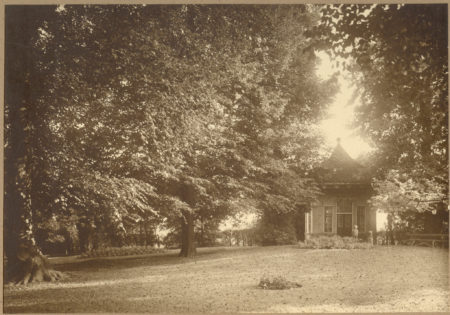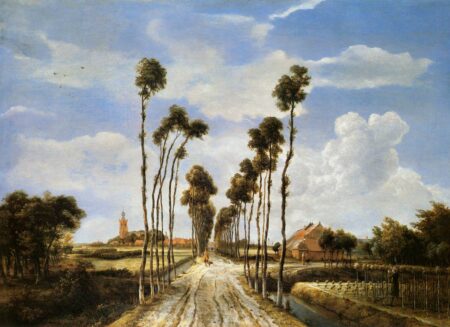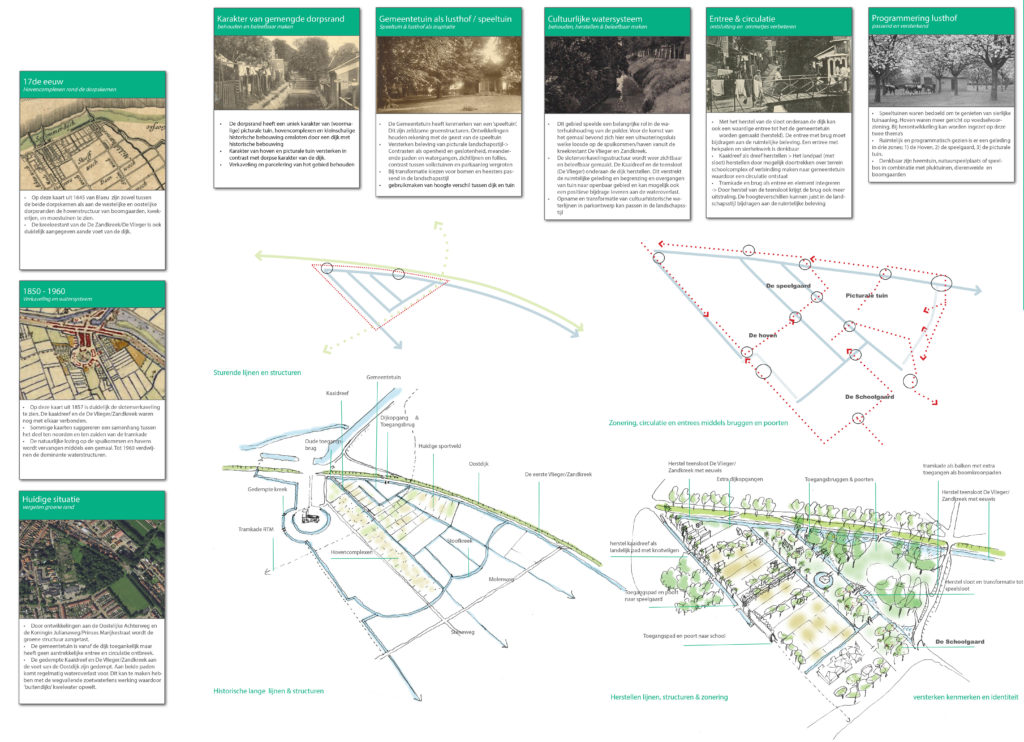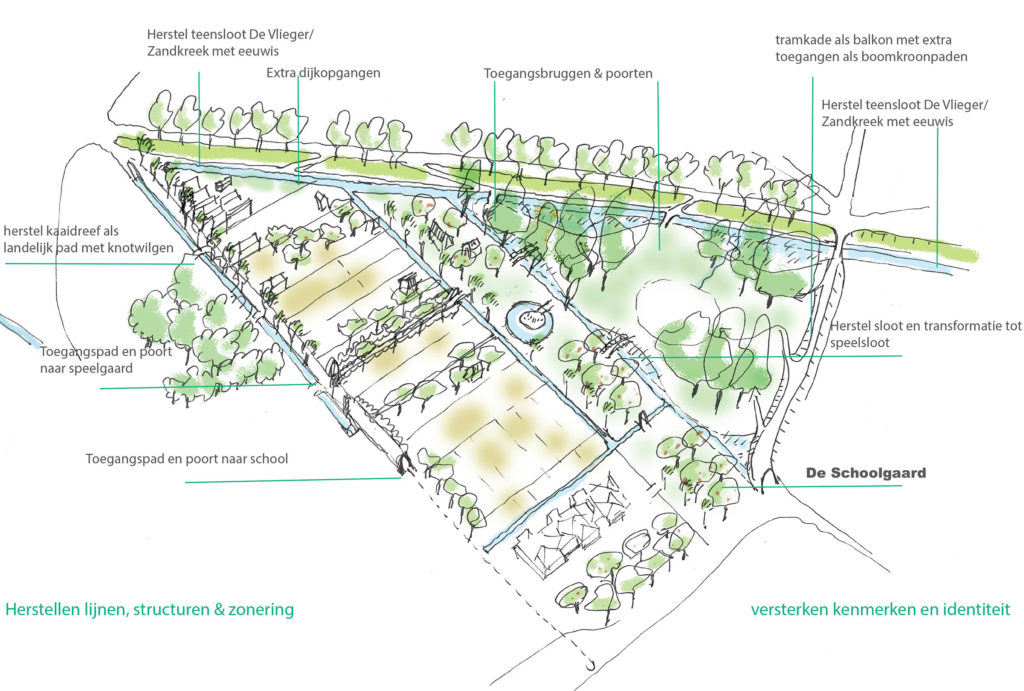De Gemeentetuin
The Gemeentetuin van Middelharnis has been neglected for a while. By restoring both the historical parcellation and ditches and taking inspiration from the landscape style of the former pleasure garden and integrating the garden with the surrounding allotments or ‘hoven’ the area can become a place for enjoying the greenery ones again.

The landscape style pleasure garden (speeltuin) in the 19th century with a so called ‘speelhuisje’ (either a tea pavilion or tool shed)
Pleasure garden
The pleasure garden (speeltuinen) ones belonged to a well to do family of the town. Pleasure gardens were very much in fashion with the Dutch bourgeoise from the 16th to the 19th century. Pleasure gardens are something in between an allotment garden and a garden estate. Usually these gardens, located on the fringes of towns and cities, were adorned with so called ‘speelhuisjes’ as tea pavilions, garden sheds and/or boathouses. If owners became very wealthy they acquired more land and turned their pleasure garden into a garden estate (buitenplaats).

Het Laantje van Middelharnis depicting tree and shrubs nursery. Perhaps the most famous depiction of ‘hoven’ in the world
Hoven
Typical about the transition between the centre of the towns and rural landscape in this area are the so called ‘hoven’. They look a lot like allotments and played a vital role in the towns economy. In this part of the Netherlands farmers were often tenants. They did not live on the land they cultivated but rather in the town itself. But being farmers they needed kitchen gardens and sheds for their tools and animals. These sheds and kitchen and allotment style gardens were located on the fringes of the villages and towns. As the soil was very fertile the ‘hoveniers’ also grew fruit and vegetables and flowers for the market and bushes and trees for the many garden estates that were built by wealthy nobility and merchants in the country. Many hoven area have disappeared or are under threat of urban of residential developments. They are a unique part of the green and agricultural heritage of the Netherlands.

Proposed framework for transformation
